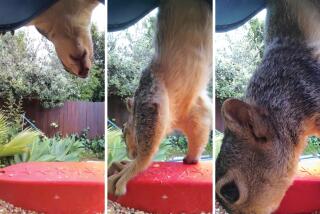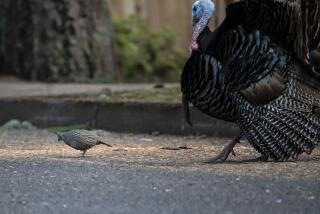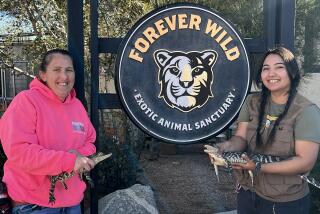Dealing with new arrivals
Come springtime, gardeners may find more than bulbs popping up in their yards. Newborn wildlife -- perhaps a quail chick, a squirrel or a raccoon -- may turn up while you’re gardening. Mary Cummins, president of Animal Advocates, a nonprofit organization in Los Angeles focused on animal rescue and education, offers these tips:
* If you find any baby animal in a nest, leave it alone and walk away. If the baby is away from a nest but seems warm and uninjured, leave it alone. The mother probably will retrieve it.
* A baby bird with only a few feathers is a nestling. If it has fallen out of the nest but seems warm and uninjured, the mother will most likely come back to care for it. Put on gloves, pick up the bird and return it to its nest. If the nest has been damaged or if you can’t reach the nest, make a new nest out of a box, berry basket or margarine tub lined with leaves and dry grass.
Place the nest at least 8 feet
high and wire it securely to the tree.
* If the bird is fully feathered and hopping on the ground, it’s probably a fledgling learning to fly. Protect it from cats and dogs, but otherwise leave it alone.
* Don’t give birds anything to eat or drink. (Feeding injured animals is how most well-meaning rescuers kill them.)
* Place squirrels in a box, wired at least 6 feet up the closest tree to protect from predators.
* Fawns and seal pups that seem healthy should be left alone. Make sure they won’t be bothered by cats, dogs or people. The mom is probably just out looking for food; she should come back by nightfall.
* Call a humane society, veterinarian, state wildlife agency or animal shelter for a referral.
More to Read
Sign up for The Wild
We’ll help you find the best places to hike, bike and run, as well as the perfect silent spots for meditation and yoga.
You may occasionally receive promotional content from the Los Angeles Times.






